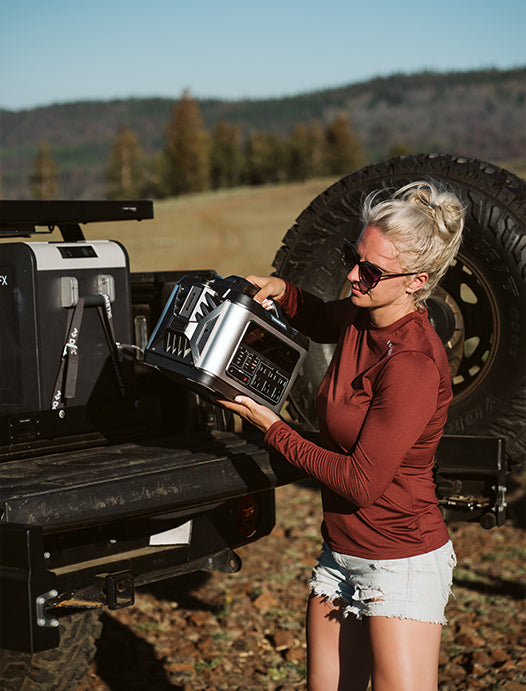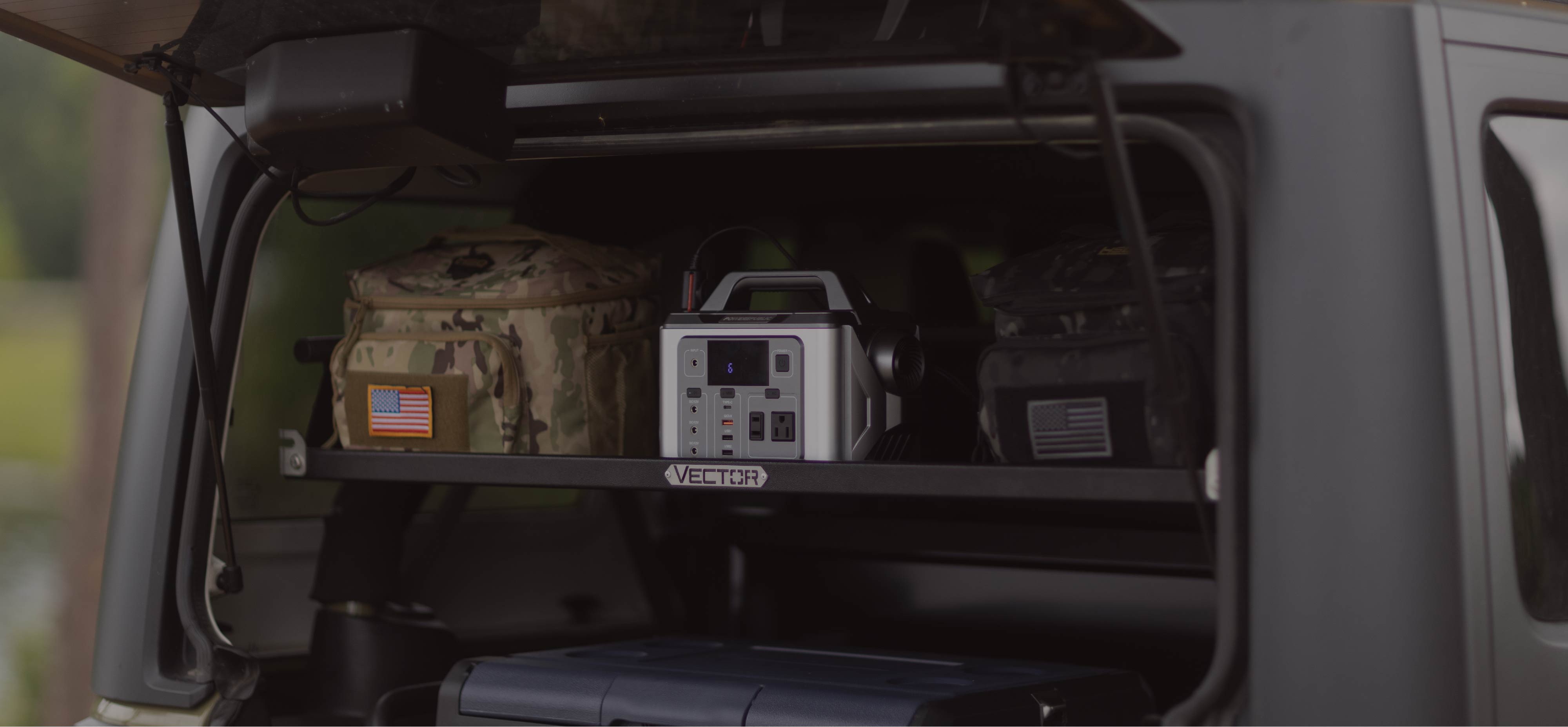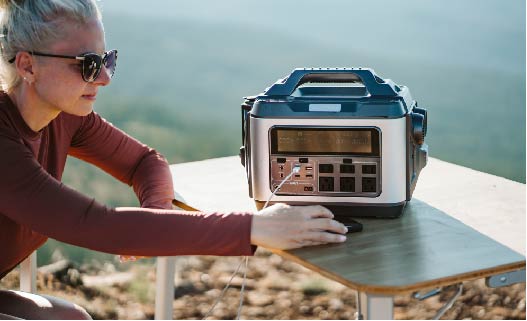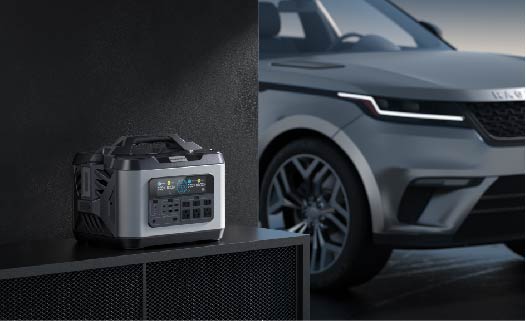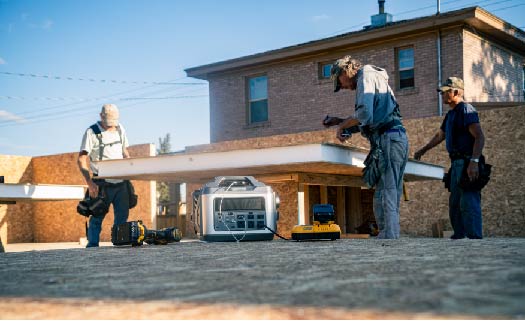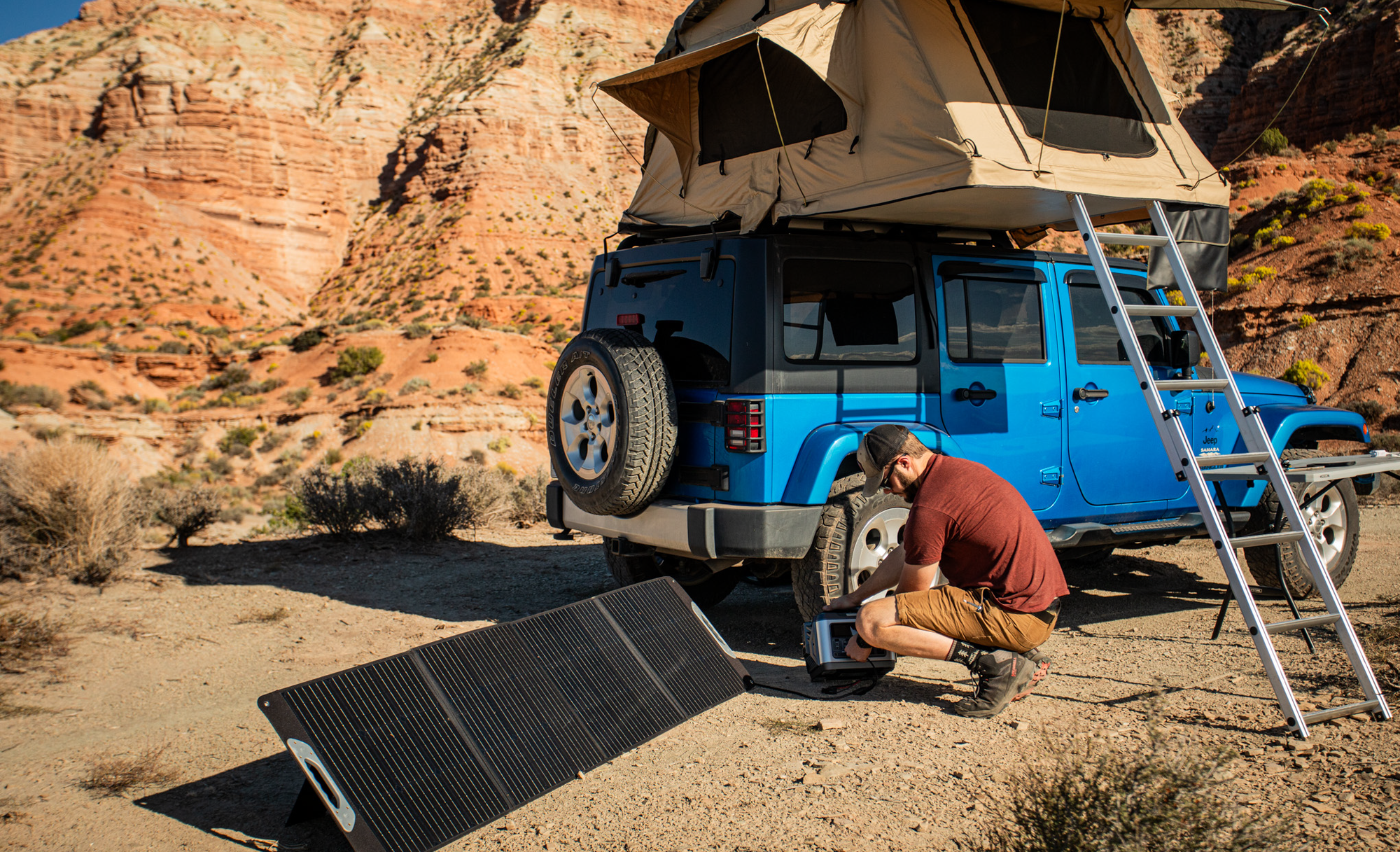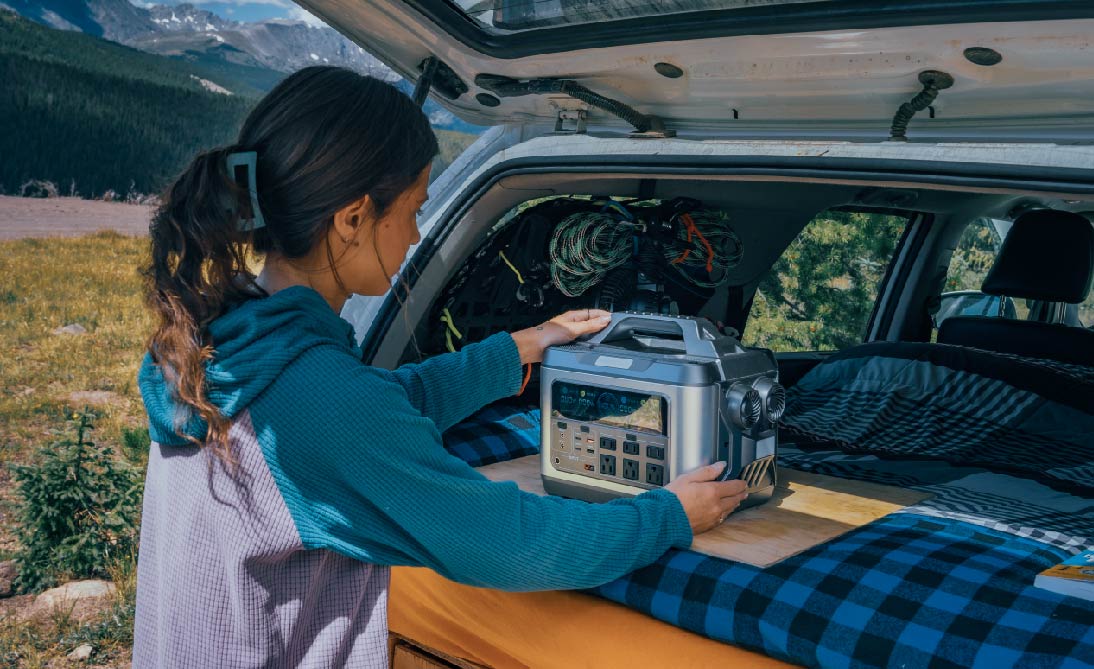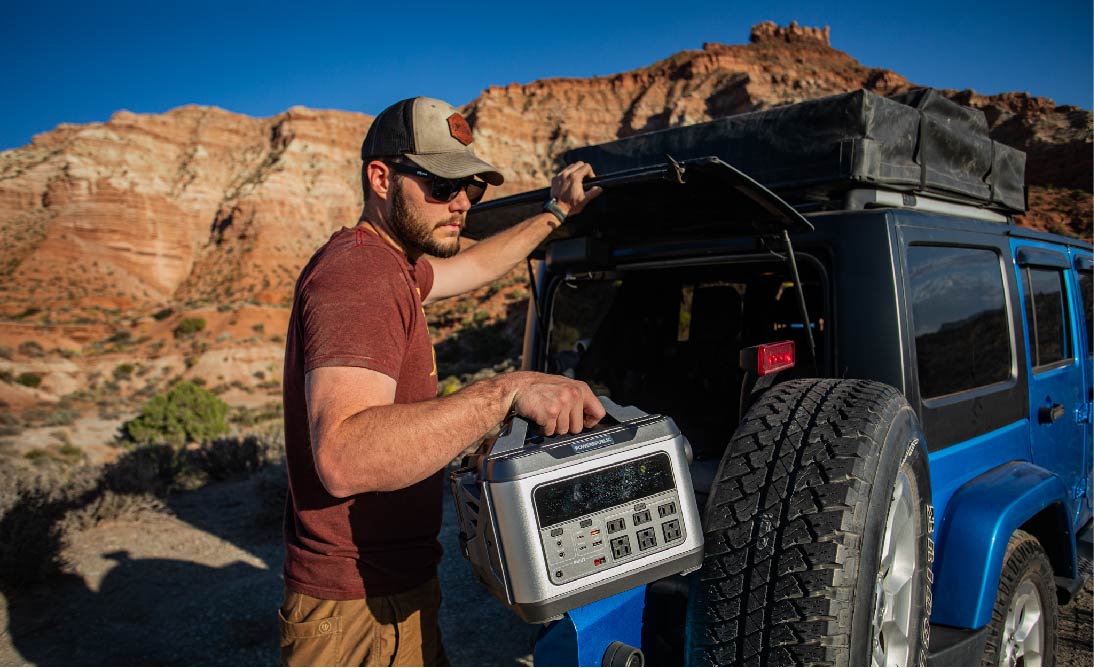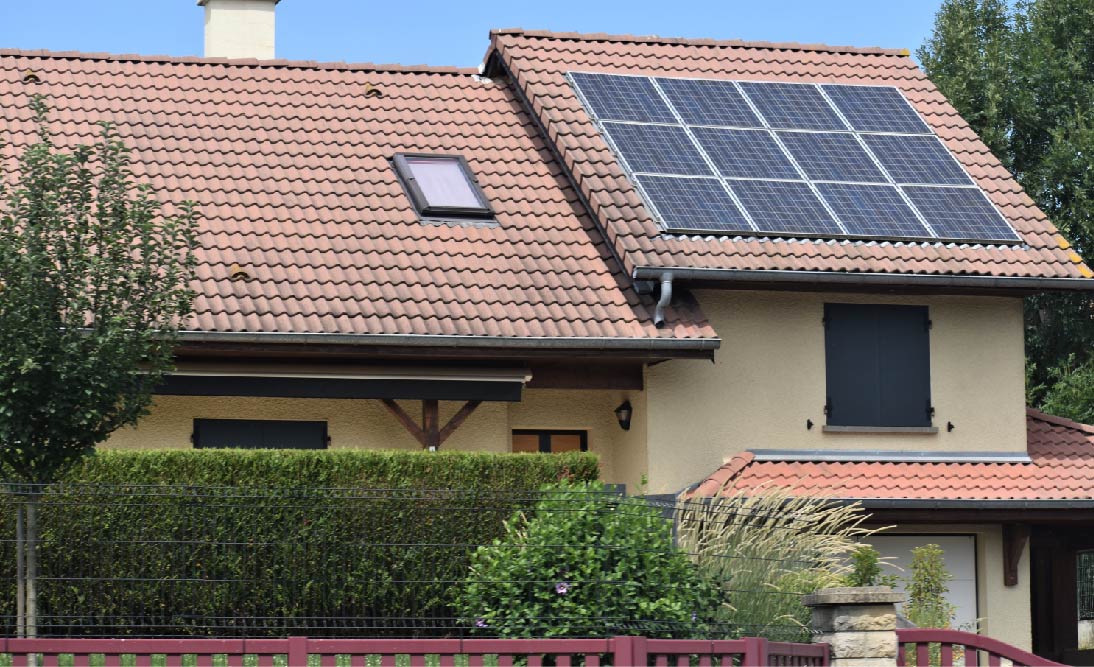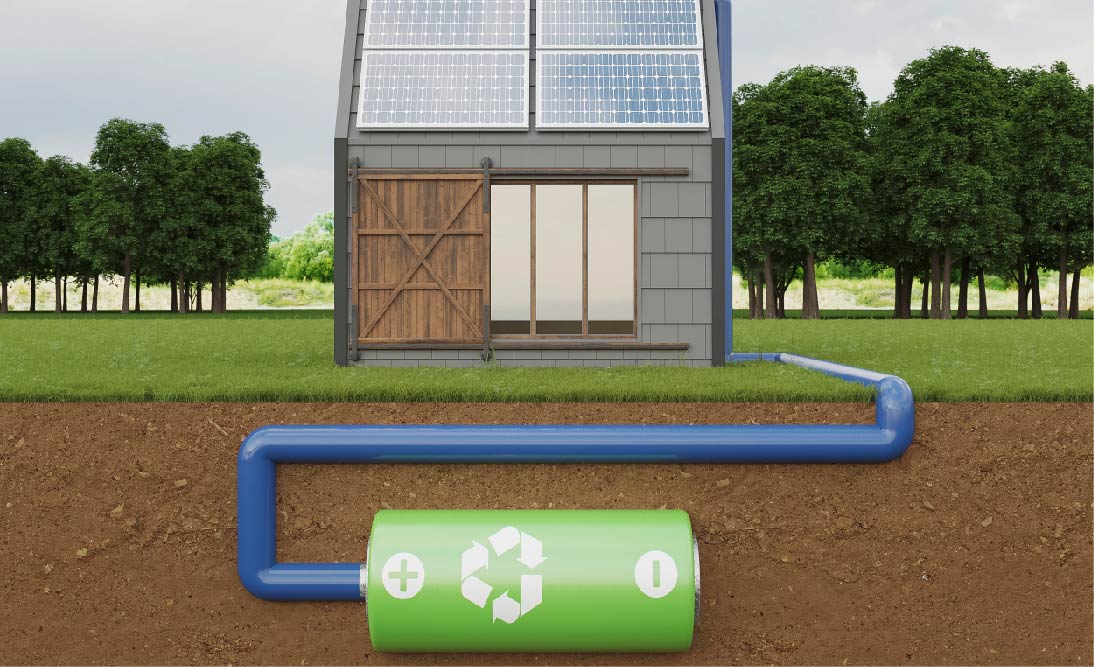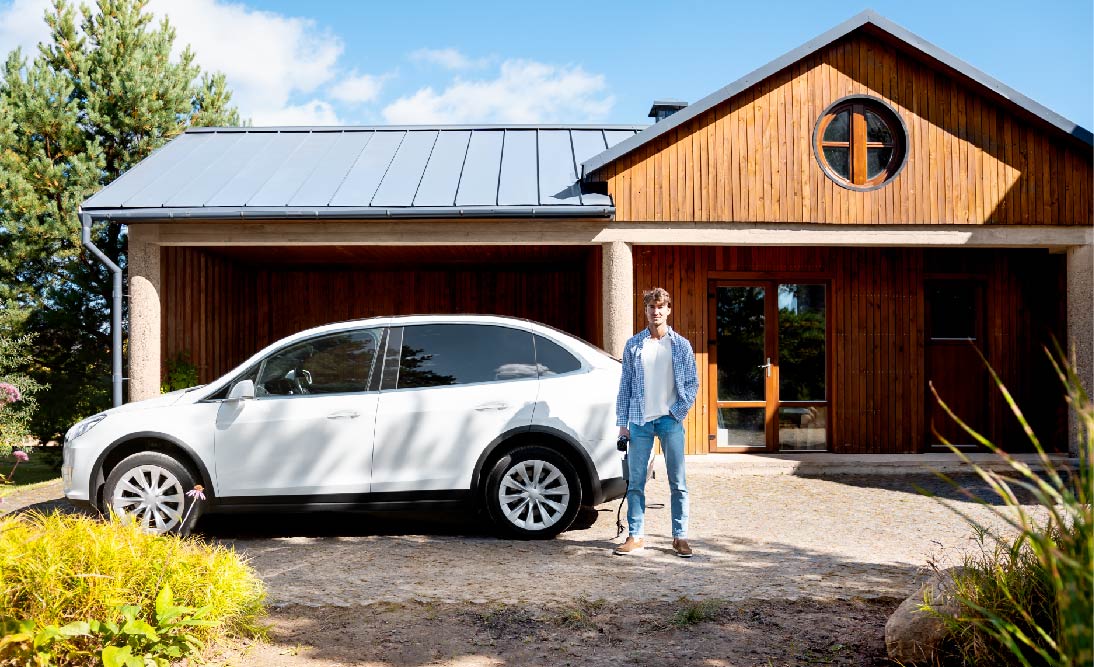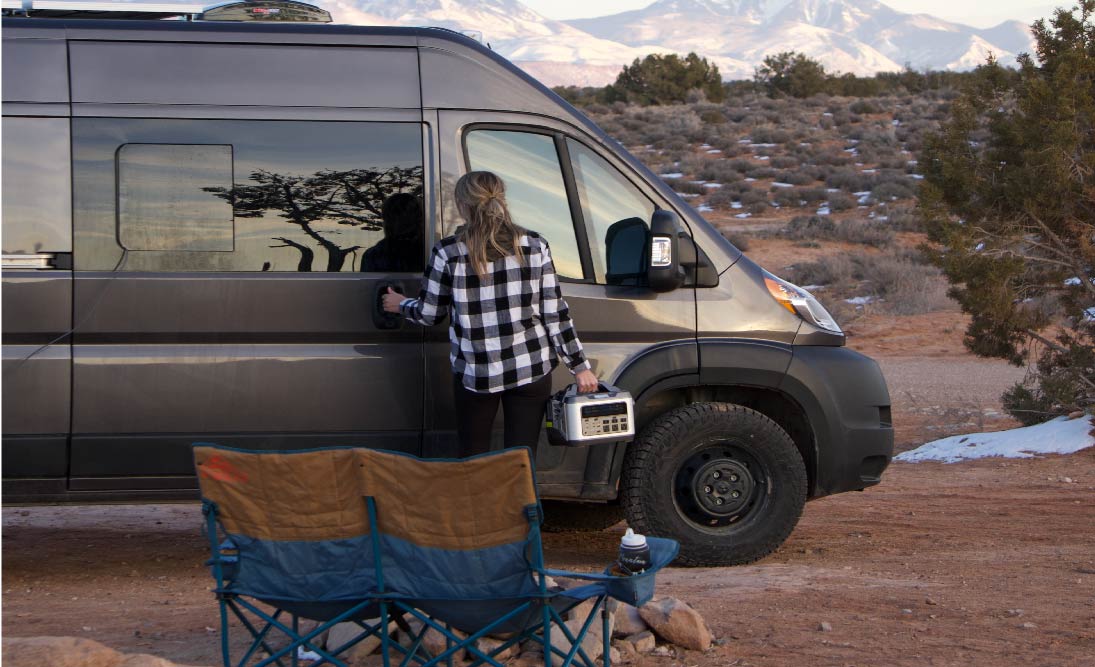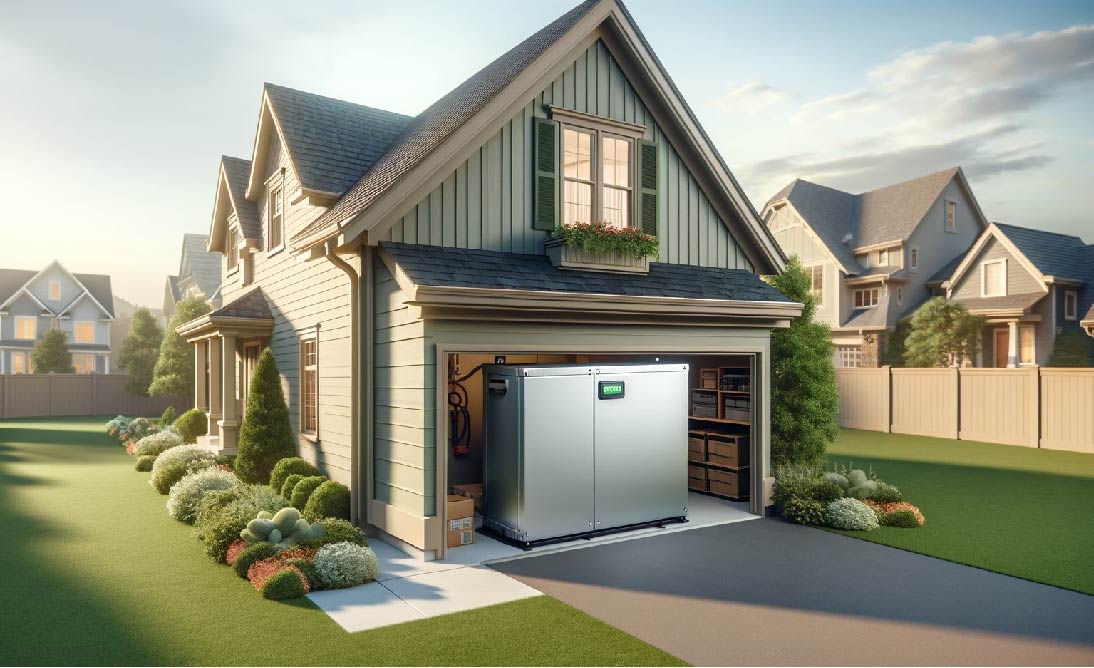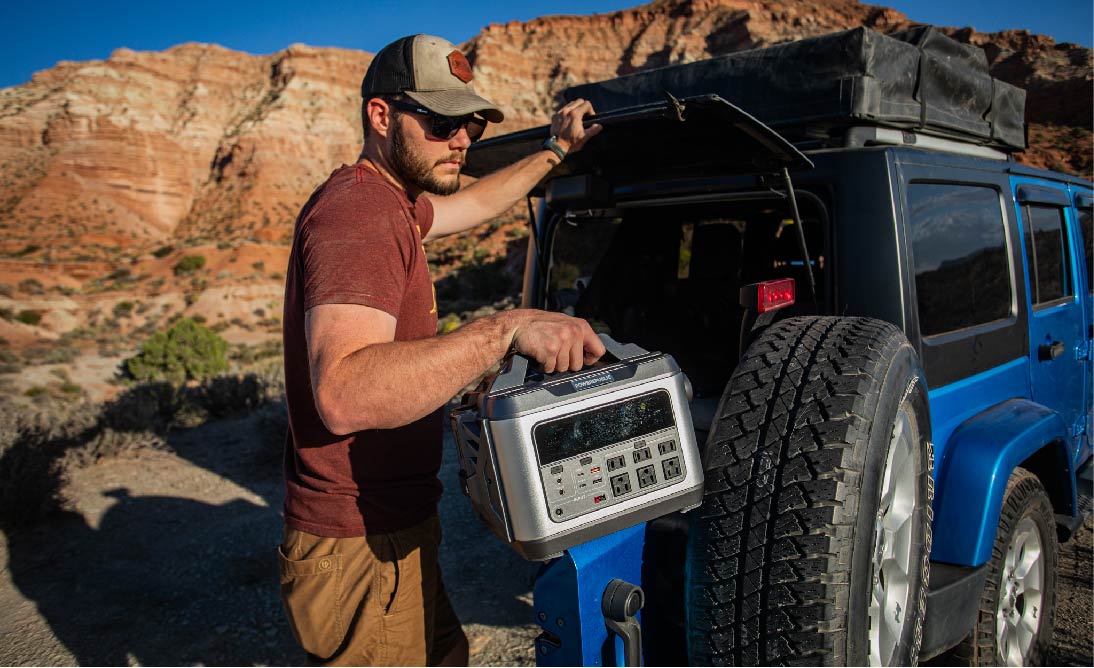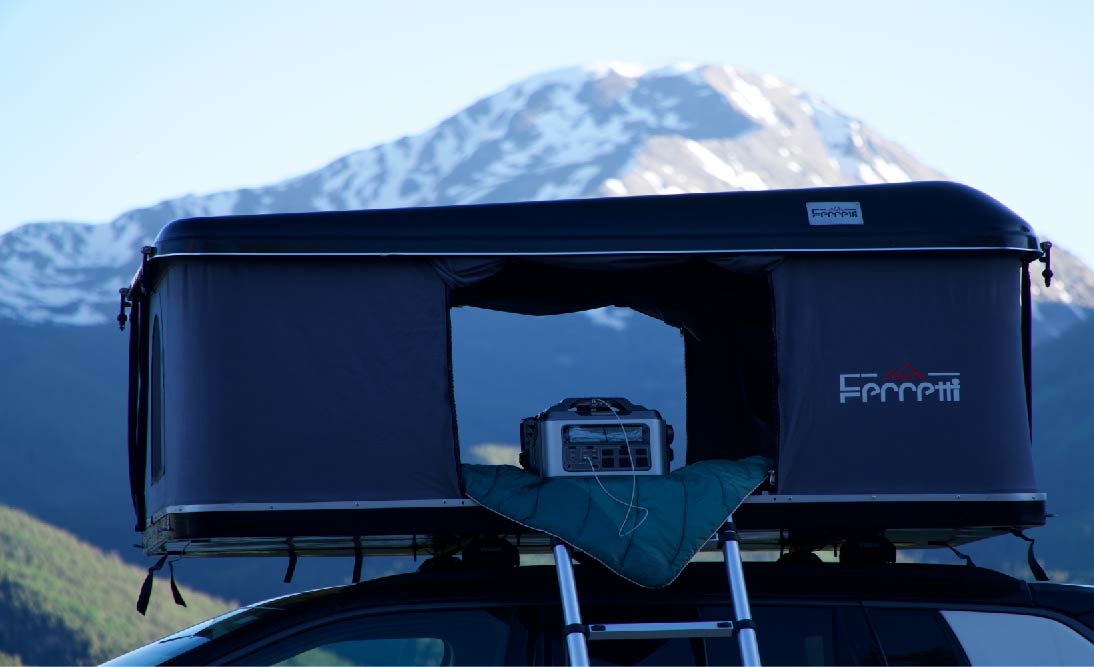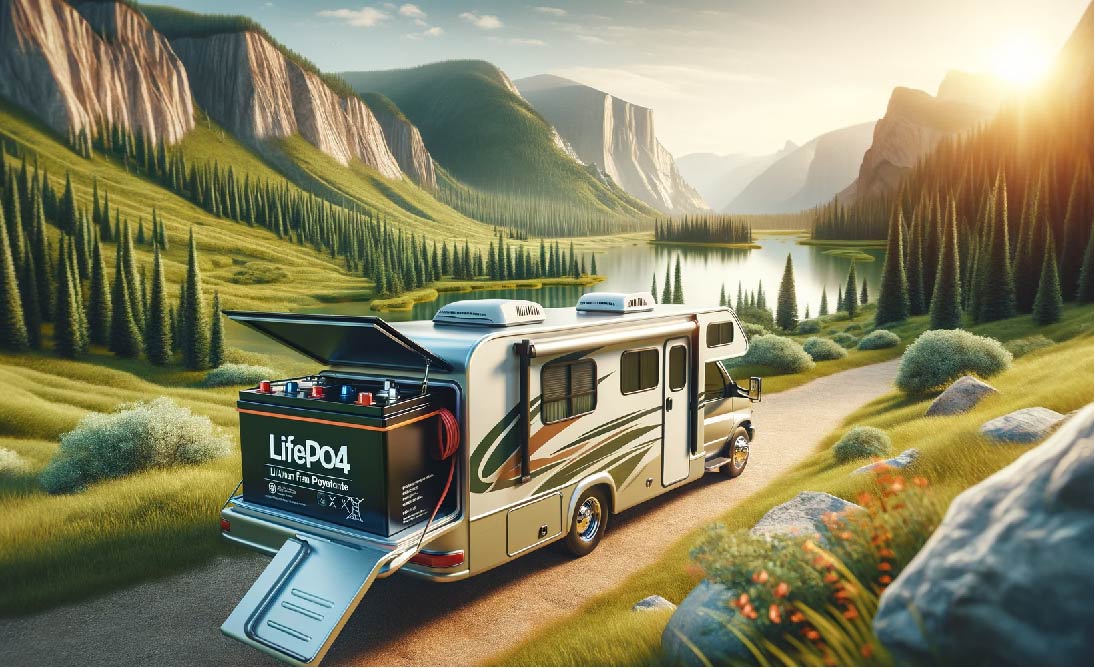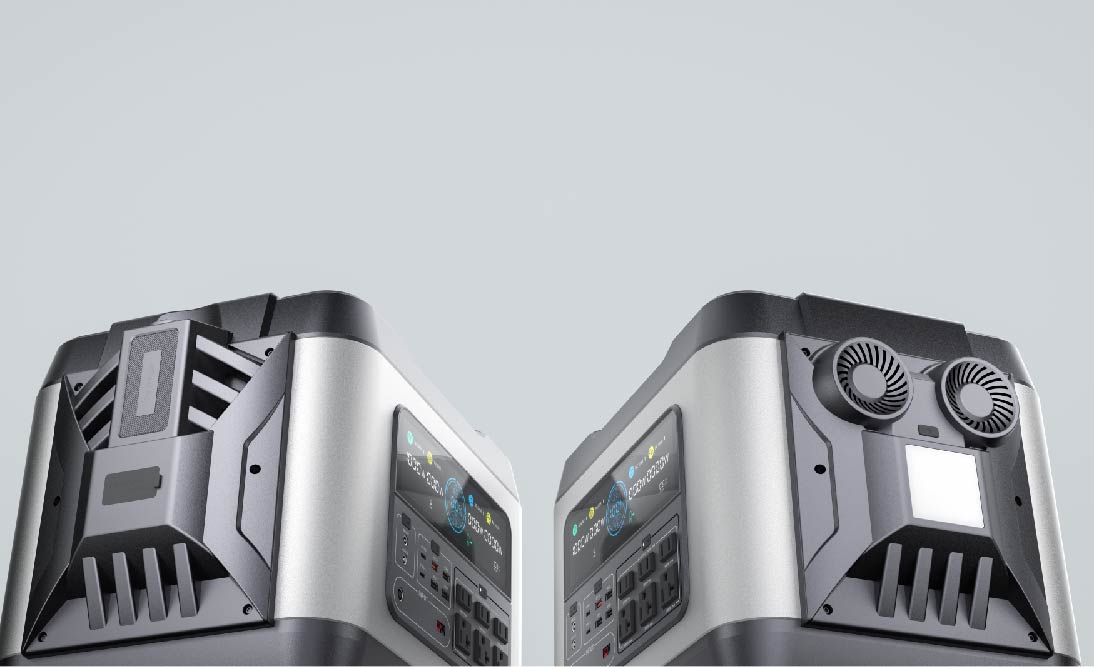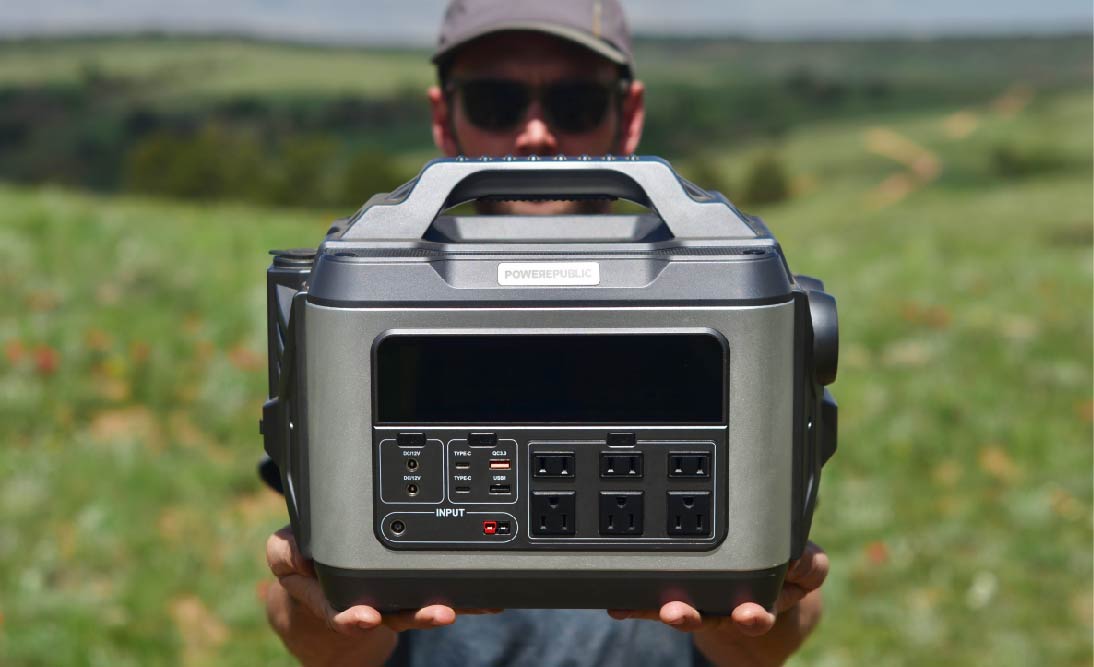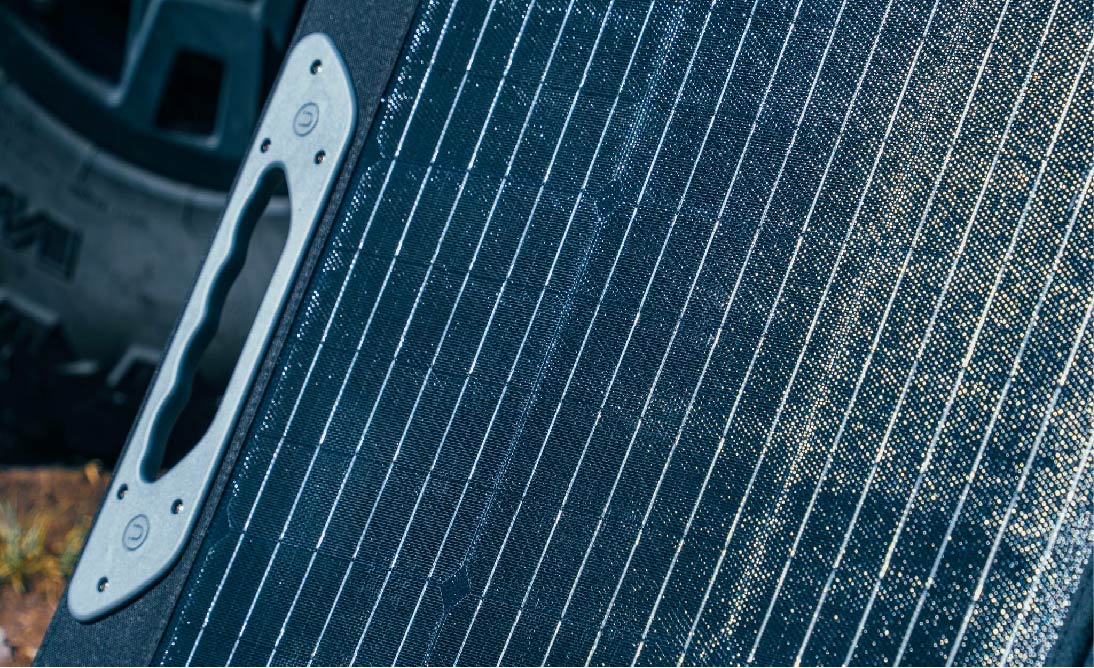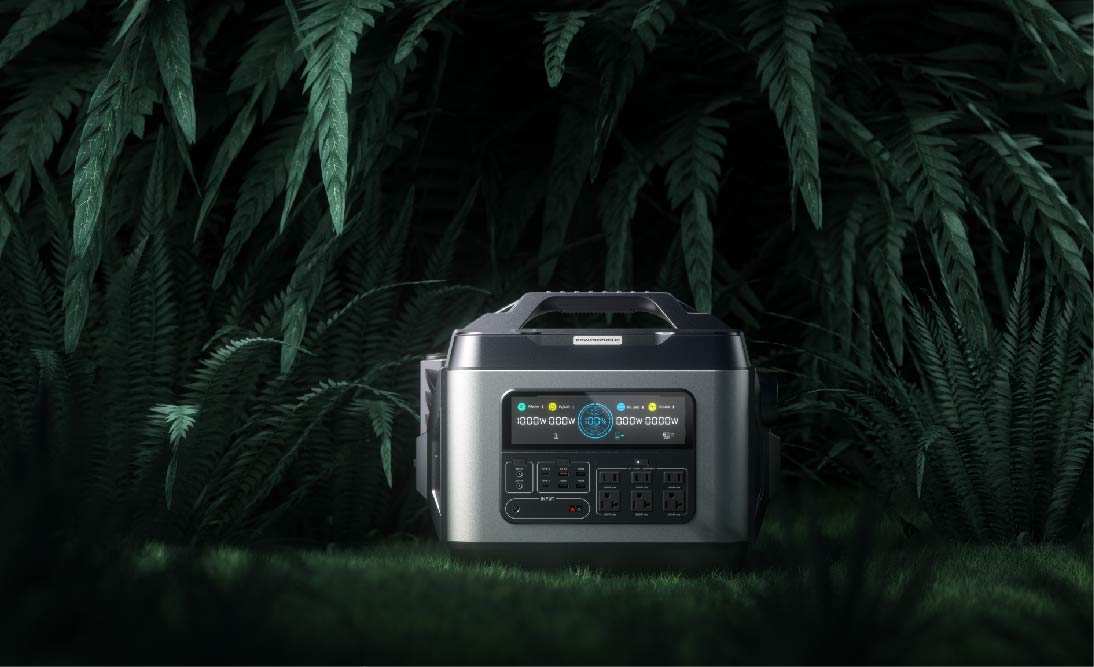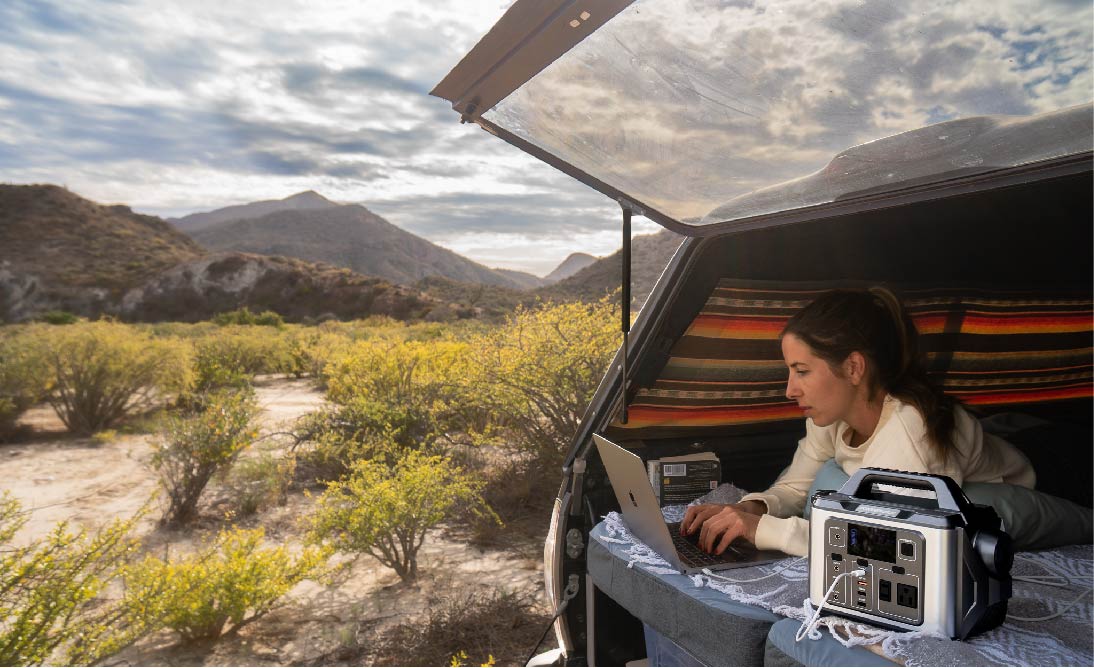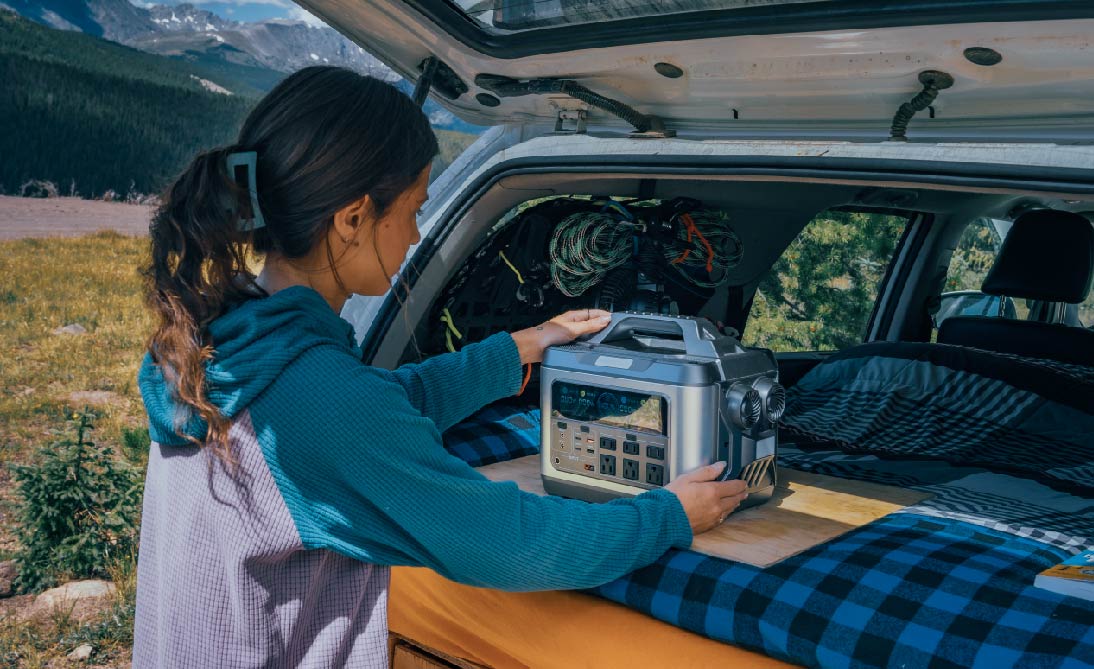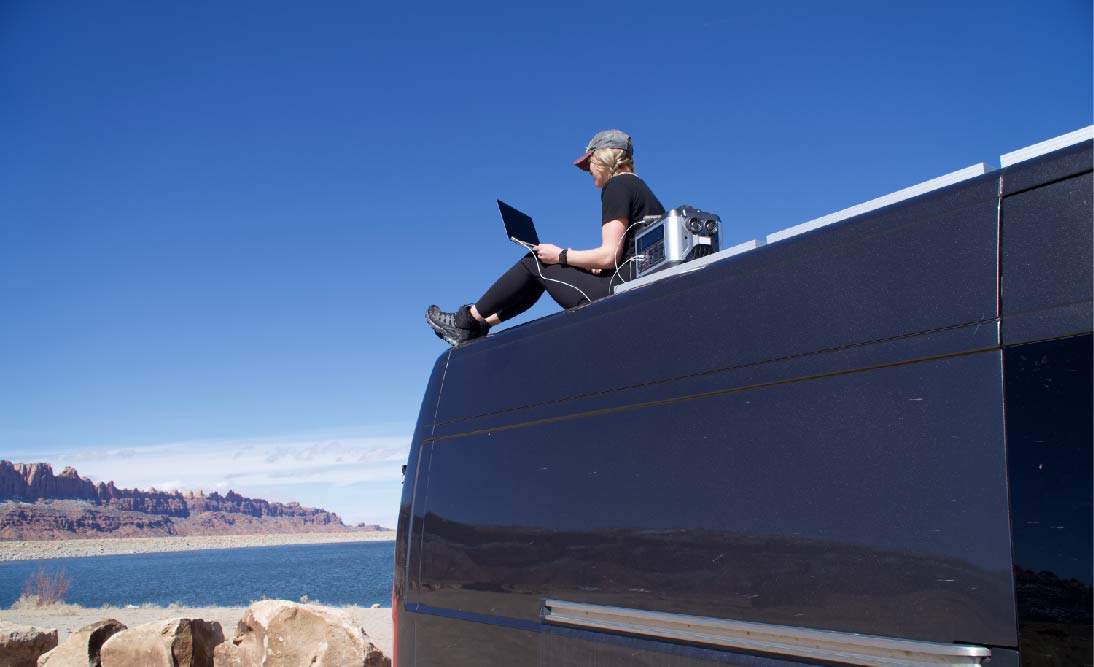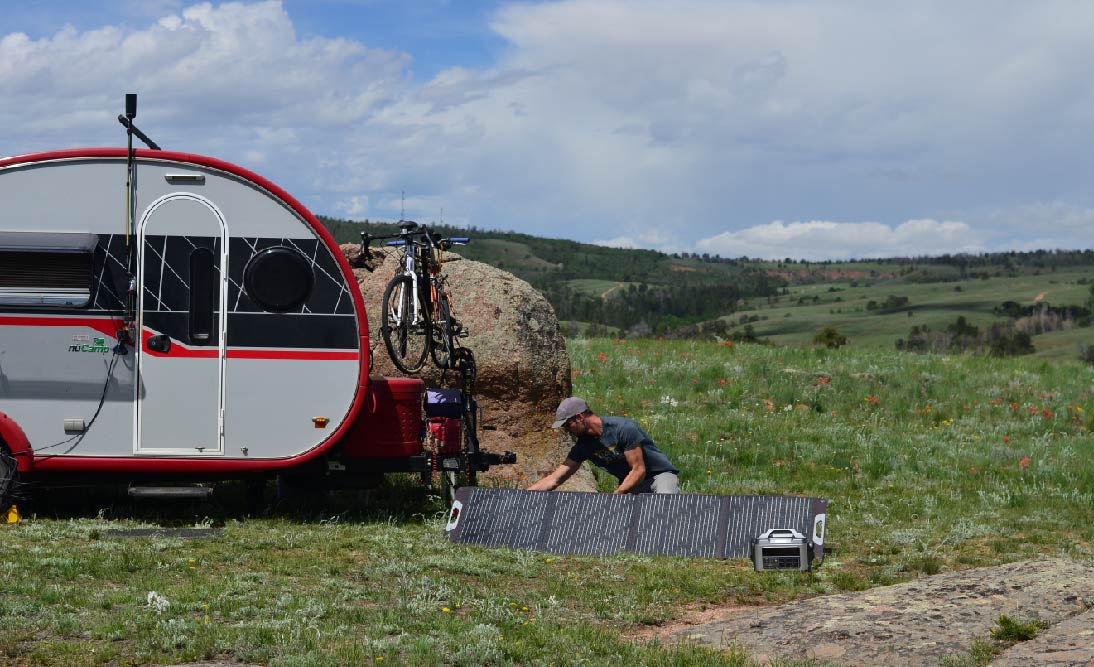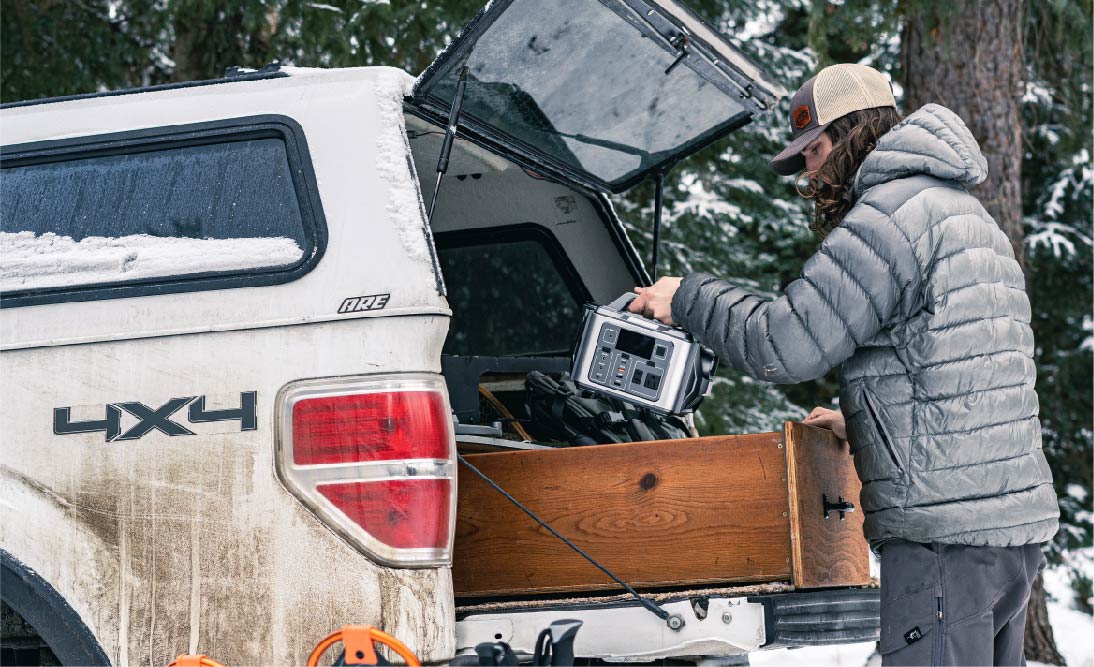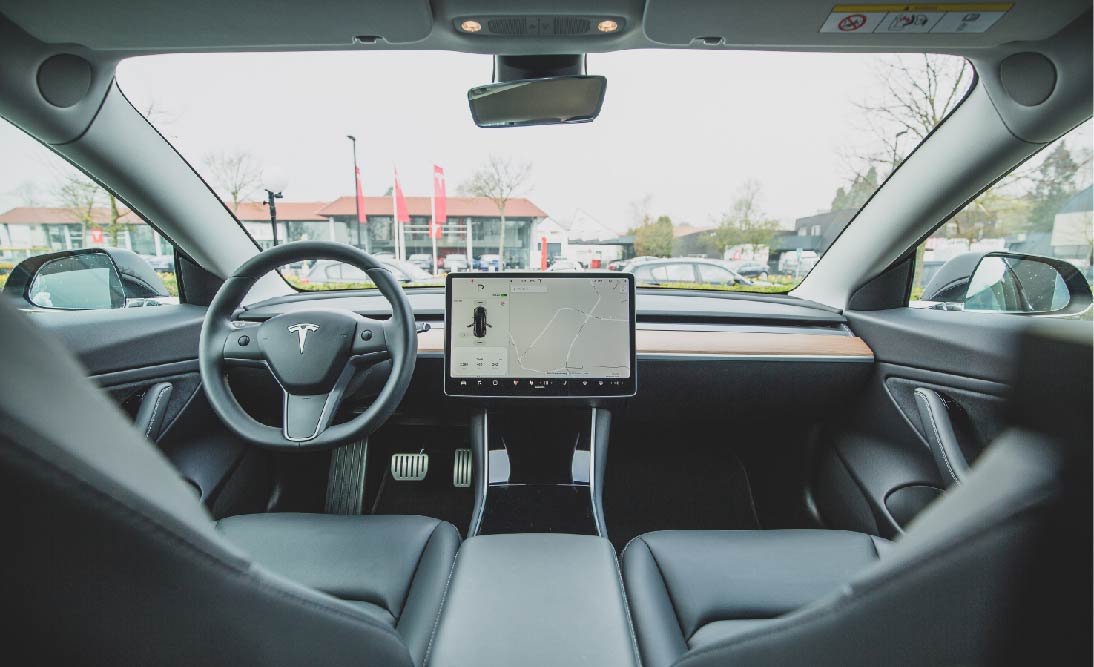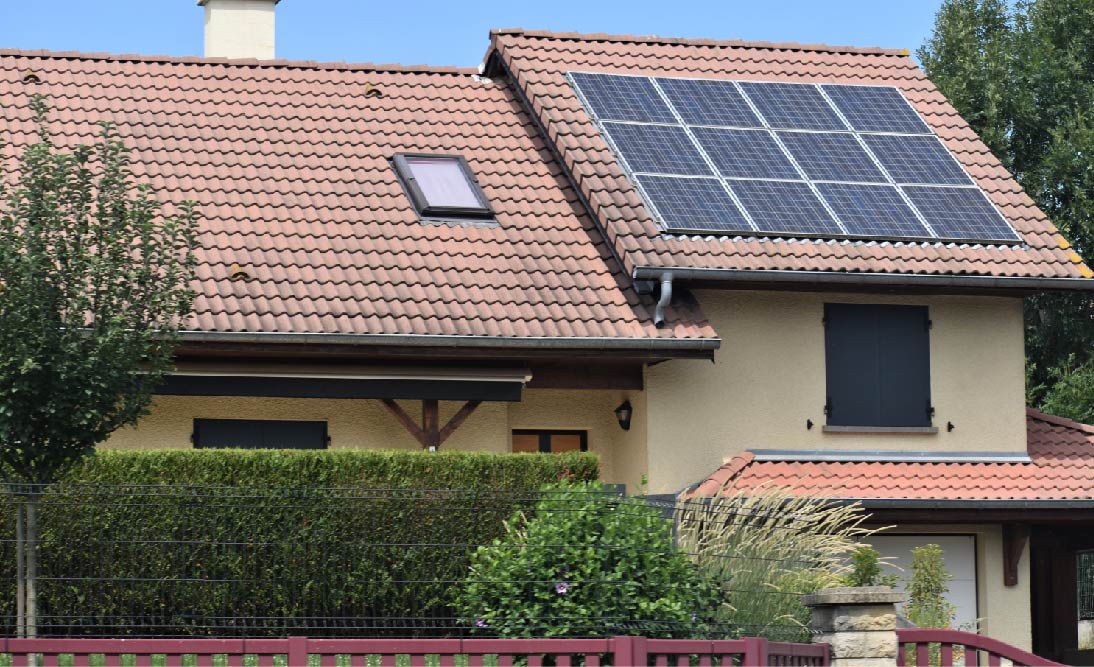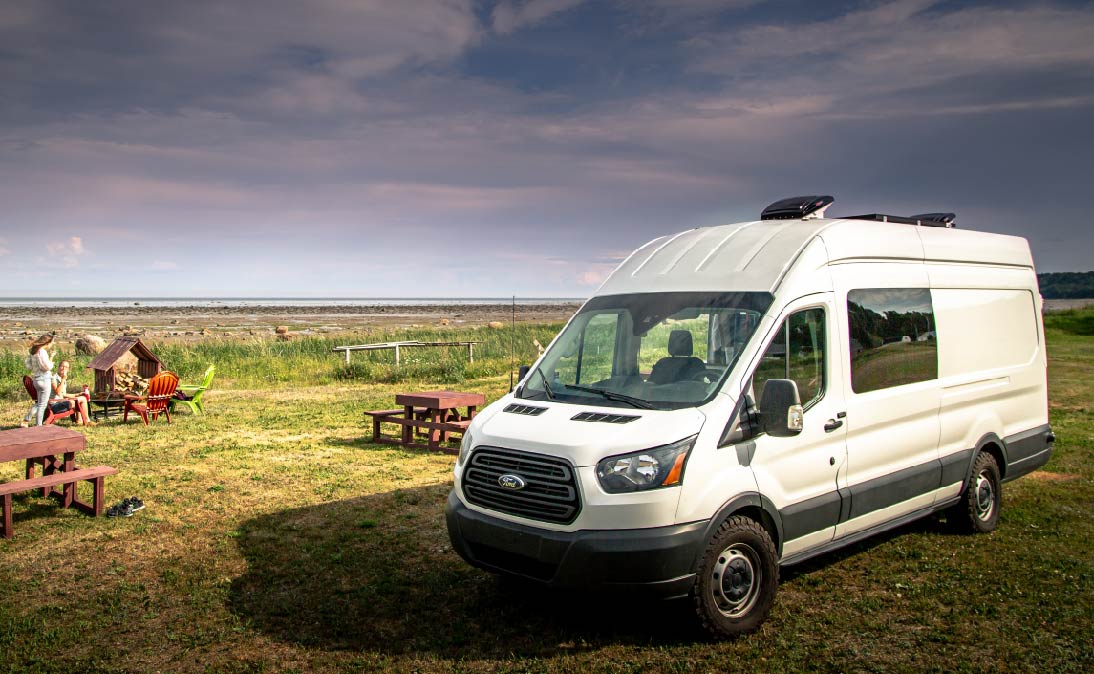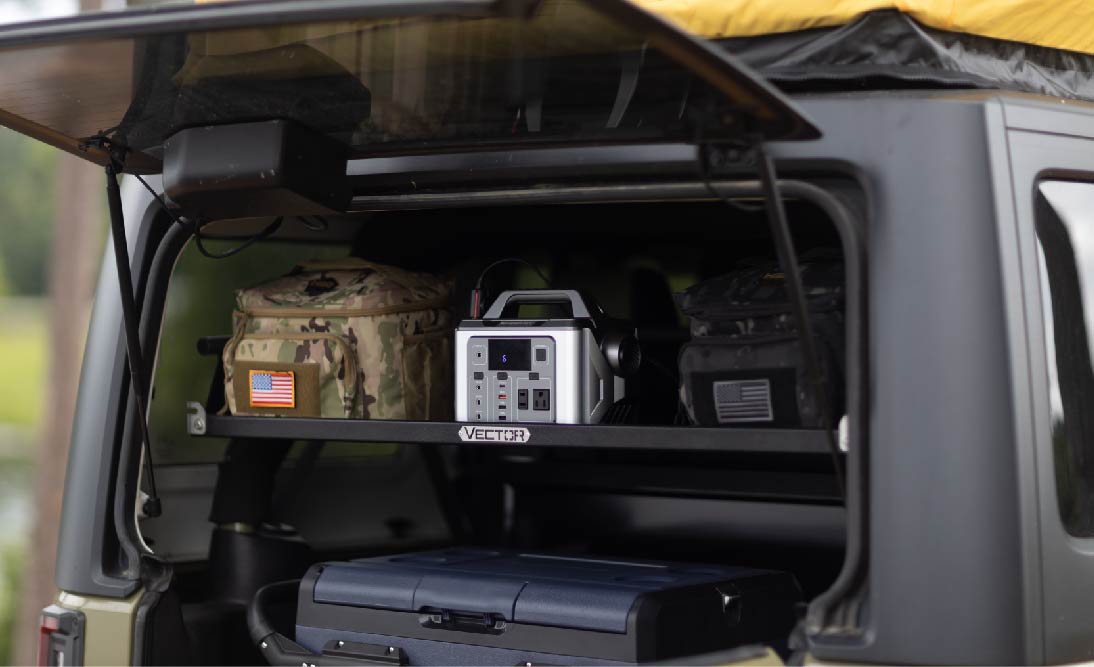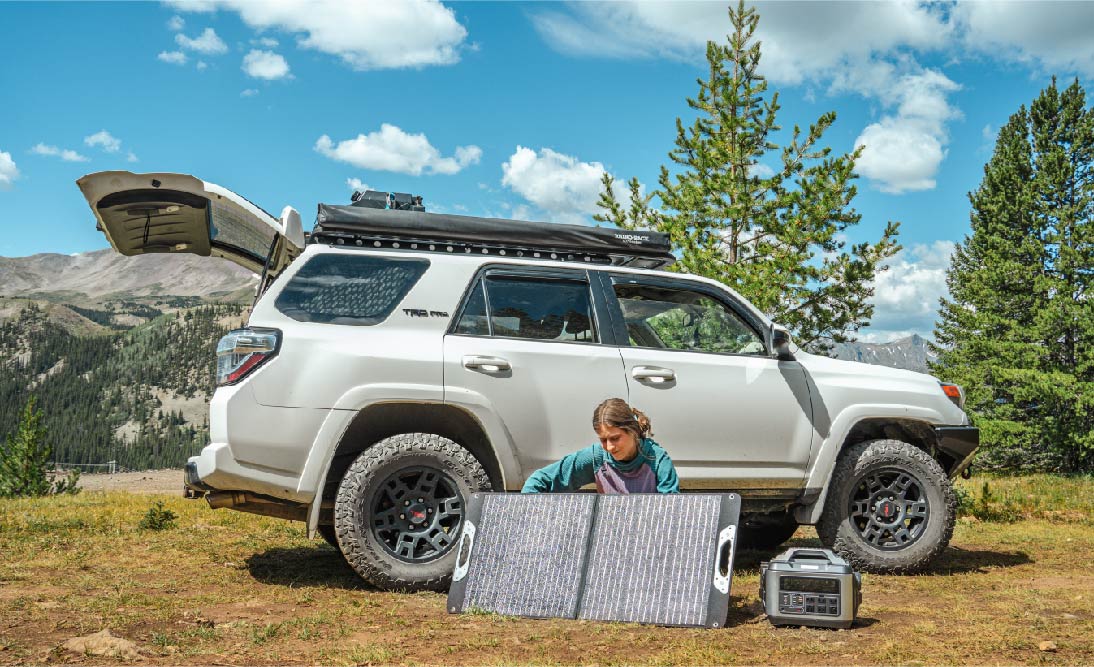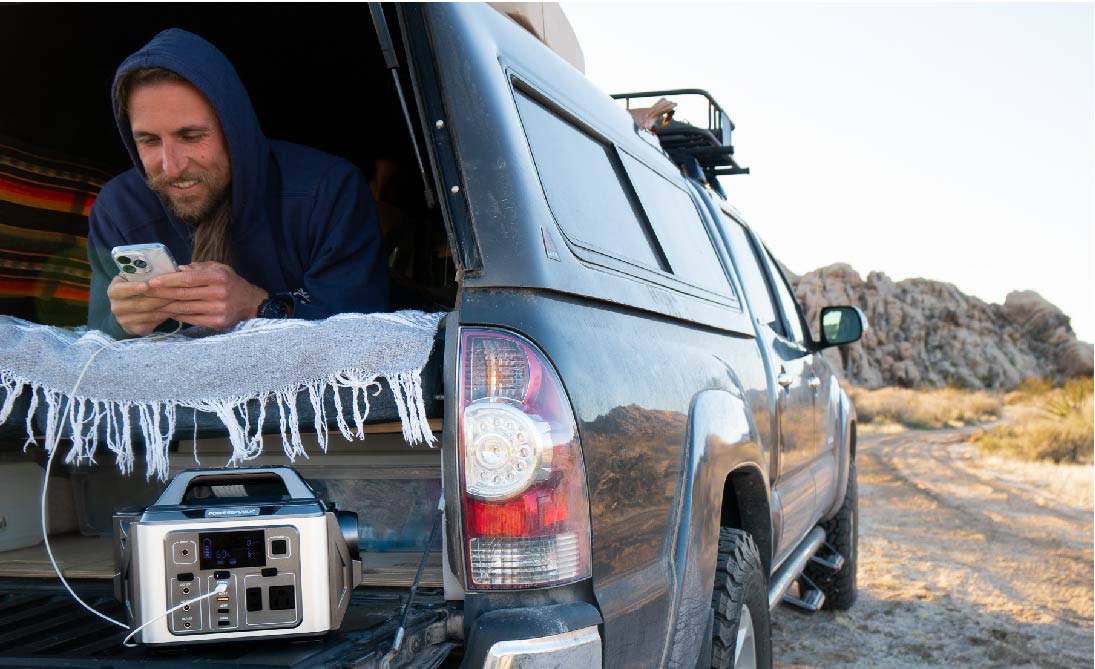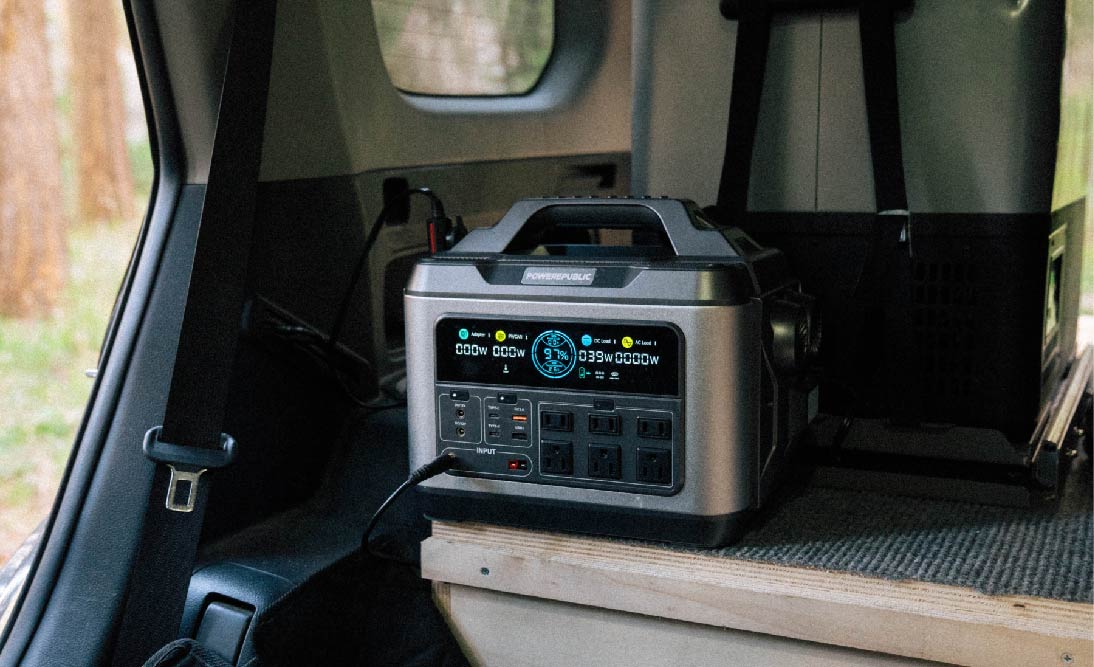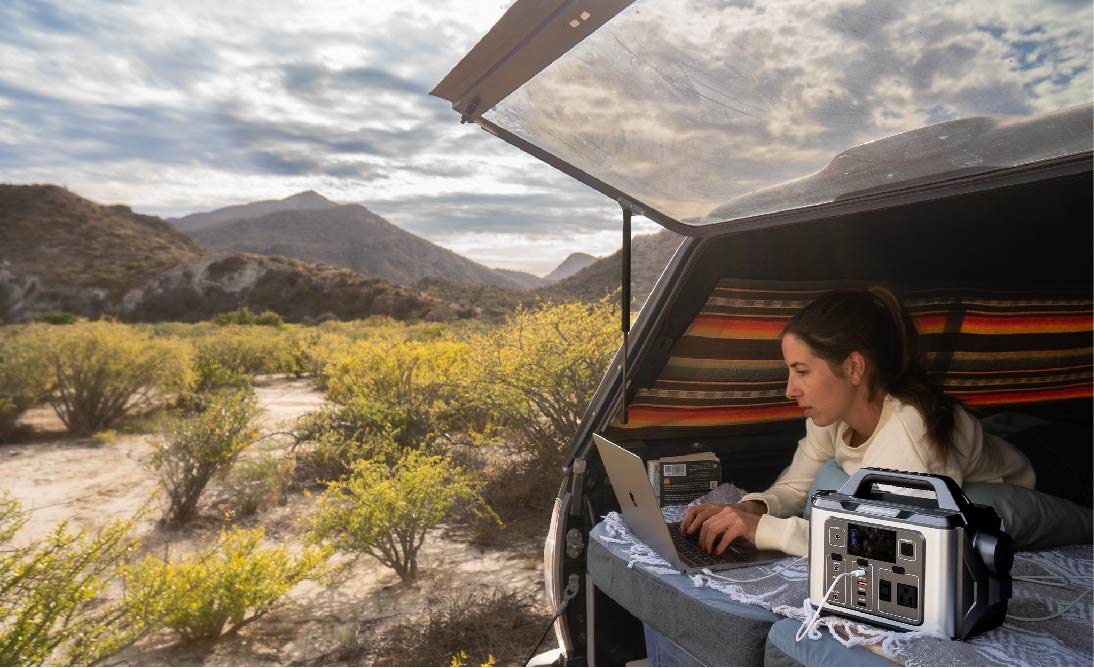Table of Contents:
Camping is fun when you and your loved ones share memorable moments and enjoy yourselves to the fullest. Having enough power to keep your cameras, drones, cell phones, laptops, TVs, projectors, and other essential gear charged is important to elevate your camping experience to the next level. In this guide, we are going to talk about camping power stations: what they are, how they work, and how to choose the ideal camping power station. We will recommend two portable power stations from POWEREPUBLIC and address some frequently asked questions about camping power stations. We hope you find this guide useful.
So, let’s dive into it!
What is a Camping Power Station?

A portable power station, often referred to as a camping power station, is an engineered device created to accumulate and store electrical energy. It is primarily used to supply power to various devices and appliances in situations where access to standard electrical sources is not available. This type of power station is particularly beneficial for outdoor pursuits such as camping, where traditional electricity access is scarce or non-existent. Here's a breakdown of what they are and how they work:
What Are Camping Power Stations?
-
Portable Battery Packs: Camping power stations are essentially large battery packs(lithium-ion or LiFePO4 batteries). They are portable, making them ideal for outdoor use.
-
Portable Power Sources: Camping power stations are compact and portable, making them easy to carry and use in various outdoor settings.
-
Multiple Outputs: They typically feature multiple outputs, such as USB ports, AC outlets, and DC carports, to charge or power various devices like smartphones, laptops, cameras, drones, lights, and small appliances.
-
High Capacity: Compared to regular power banks used for smartphones, camping power stations have a much higher capacity, enabling them to store enough energy to power more demanding devices over longer periods.
How Do They Work?
-
Energy Storage: These power stations store electricity in built-in batteries. The capacity of these batteries can vary significantly, affecting how long the power station can provide energy before needing a recharge.
-
Charging Methods: They can be charged in several ways, typically through AC outlets (wall plugs), car chargers, or solar panels. Solar charging is particularly popular for camping, as it allows for energy replenishment even in remote locations.
-
Power Conversion: When in use, the stored DC power in the battery is converted to AC power (if an AC outlet is used), which is the type of power most of your devices require. This conversion is handled internally by the power station's inverter.
-
Safety Features: Modern camping power stations often come with built-in safety features like overcharge protection, short-circuit protection, temperature control, and more to ensure safe and reliable operation.
-
Portability and Durability: They are designed to be portable and rugged, often with features like handles for easy carrying and durable construction to withstand outdoor conditions.
In short, camping power stations are versatile, portable energy sources that can power a range of devices during outdoor adventures, providing convenience and comfort away from the grid. Their ability to be recharged in various ways, including solar power, makes them an eco-friendly and practical solution for extended trips in nature.
Why Should We Need a Camping Power Station?

Camping power stations have become increasingly essential for modern outdoor adventures. Here are the key reasons why they are needed:
-
Convenience and Comfort: When camping or engaging in outdoor activities, access to electricity can greatly enhance comfort and convenience. Power stations allow you to use electronic gadgets like GPS, cameras, and smartphones, which are essential for navigation, safety, and capturing memories.
-
Continuous Connectivity: In an age where staying connected is important, power stations ensure that your communication devices like cell phones and laptops remain charged, keeping you in touch with the world in case of emergencies.
-
Powering Recreational Devices: They enable the use of recreational devices like drones, portable speakers, and projectors, enhancing the camping experience with entertainment and exploration capabilities.
-
Supporting Essential Appliances: For extended camping trips, power stations can run small appliances like electric grills, coffee makers, and portable refrigerators, making your outdoor experience better.
-
Eco-Friendly Energy Source: Unlike traditional gas generators, camping power stations provide a clean, quiet, and environmentally friendly way to generate power. This is particularly important in natural settings where preserving the environment and reducing noise pollution is crucial.
-
Emergency Backup: They serve as a reliable backup power source in emergencies, especially when camping in remote areas where power outages or lack of access to electricity can be a challenge.
-
Solar Charging Capability: The ability to recharge these stations via solar panels makes them sustainable and ideal for prolonged outdoor stays, reducing dependency on grid electricity and allowing for off-grid adventures.
Limitations of Using a Camping Power Station

While camping power stations offer numerous benefits, there are also limitations to consider:
-
Limited Capacity: Their energy storage is finite. Once depleted, they require recharging, which can be challenging in remote areas without access to power sources.
-
Charging Time: Recharging a power station, especially via solar panels, can be time-consuming, depending on the capacity of the station and the charging method.
-
Weight and Portability: Higher-capacity models can be heavy and less portable, making them less ideal for backpacking or when space and weight are constraints.
-
Cost: High-capacity, feature-rich models can be expensive, making them a significant investment.
-
Power Output Limitations: They may not be suitable for very high-power devices or appliances, limiting their use to smaller, less energy-intensive gadgets.
-
Weather Dependency for Solar Charging: Solar charging efficiency can be greatly affected by weather conditions, which can be unpredictable in outdoor settings.
Understanding these limitations is crucial in choosing the right camping power station for your needs and managing expectations regarding its performance and capabilities.
How To Choose the Right-Sized Camping Power Station?

Choosing the right-sized camping power station involves considering several factors, including the power requirements of your devices, the duration of your trip, and the charging capabilities of the power station. Here's a detailed guide with calculations and examples to help you make an informed decision:
1. Calculate Total Power Requirements
First, you need to calculate the total power requirement of all the devices you plan to use. This is typically measured in watt-hours (Wh).
Example Calculation:
-
Smartphone: 10 Wh per charge
-
Camera: 15 Wh per charge
-
Drone: 20 Wh per charge
-
Laptop: 60 Wh per charge
If you plan to charge each of these devices once a day for a 3-day camping trip, the total energy requirement would be:
Total Energy Requirement=(Smartphone+Camera+Drone+Laptop)* Number of Days=(10+15+20+60)*3=105*3=315 Wh
2. Consider Extra Capacity
It's wise to add a buffer (around 20-25%) to your total power requirement to account for inefficiencies and unexpected usage.
Buffered Energy Requirement=Total Energy Requirement*1.25=315Wh*1.25=393.75 Wh
3. Evaluate Power Station Capacity
Power stations are rated by their capacity in watt-hours. Choose a model with a capacity equal to or greater than your buffered energy requirement. In this case, a power station with at least 400 Wh capacity would be appropriate.
4. Check Output Types and Power
Ensure the power station has the correct output types (USB, AC, DC) and can handle the power draw of your devices. For example, if your laptop requires an AC outlet, the power station should have an AC output.
5. Factor in Recharging Methods
Consider how you'll recharge the power station. If relying on solar panels, ensure the power station is compatible and consider the solar panel's wattage and charging time. For instance, a 100W solar panel may take several hours to fully recharge a 400 Wh power station, depending on sunlight conditions.
6. Portability and Weight
Larger capacity power stations are heavier. If hiking or moving frequently, opt for a lighter model even if it means sacrificing some capacity.
7. Budget and Additional Features
Balance your budget with the power station’s features, like display screens, multiple ports, fast charging, etc. Most camping power stations are ranging from $200 to $1500.
8. Example Scenario
Suppose you have the following devices and usage plan for a 2-day camping trip:
-
Smartphone (5 charges)
-
Camera (2 charges)
-
Drone (1 charge)
-
Laptop (1 charge)
Assuming the same power requirements as the previous example, your total energy requirement would be: =(10×5)+(15×2)+20+60=160 Wh. Adding a 25% buffer: 160×1.25=200 Wh. In this scenario, a power station with at least 200 Wh capacity would be suitable. Consider other factors like portability and recharging methods to finalize your choice.
By following these steps, you can select a camping power station that meets your specific needs and ensures a reliable power source throughout your outdoor adventures.
2 POWEREPUBLIC Models as Camping Power Stations

POWEREPUBLIC offers two amazing and durable camping power stations for outdoor enthusiasts, the T306 and T1200 portable power stations. These two models are perfect for campers who are looking for a lightweight and practical camping power station.
Both the T306 and T1200 strike a great balance between portability and functionality. To better illustrate the functionality of these two models, we have created a table below listing some important features and specs of both models, along with the operation time for essential camping gear.
|
Models |
Specs & Features |
Est.Operation Time(hours) |
|
300W/296Wh Surge 600W Lithium-ion Batteries BMS for Protection 10 Output Ports LED Light On The Back Less than 10 Pounds 120W Solar Input Petite and Powerful |
TV(90W): 2.8 hours Portable Refrigerator(70W): 3.5 hours LED Camping Lantern(10W): 25 hours Smartphone Charger(5W): 50 hours Drone Battery Charger(60W): 4 hours Laptop(60W): 4 hours Portable Projector(50W): 5 hours GPS Device(5W): 50 hours Portable Fan(25W): 10 hours Electric Blanket(60W): 4 hours Bluetooth Speaker(15W): 16.5 hours |
|
|
1200W/1110Wh Surge 2600W Lithium-ion Batteries BMS for Protection 13 Output Ports LED Light On The Side Around 30 Pounds 230W Solar Input Portable and Powerful |
TV(90W): 10.5 hours Portable Refrigerator(70W): 13.5 hours LED Camping Lantern(10W): 94 hours Smartphone Charger(5W): 188.5 hours Drone Battery Charger(60W): 15.5 hours Laptop(60W): 15.5 hours Portable Projector(50W): 18.5 hours GPS Device(5W): 188.5 hours Portable Fan(25W): 37.5 hours Electric Blanket(60W): 15.5 hours Bluetooth Speaker(15W): 63 hours |
The Est. operation time is calculated using the formula:
-
Working Time(h)=Battery Capacity of the Camping Power Station(Wh)*0.85/Power Of The Item(W)
-
For a more precise estimation, please read the user manual of the item(s).
-
The higher the total power of the item(s), the shorter the working time.
FAQ I: What’s the Lifespan of Portable Power Stations?

Answer: The durability and longevity of portable power stations are largely determined by the type of battery they use and the number of charging cycles they can undergo. The majority of superior power stations are equipped with lithium-ion or lithium-polymer batteries. These batteries usually have a lifespan ranging from 500 to 1000 charging cycles before experiencing a notable decline in their storage capacity.
Example:
-
If a power station has a lifespan of 800 charge cycles and you use it fully and recharge it about once a week, its lifespan would be approximate: Number of Charge Cycles/Frequency of Use per=800/52=4 years
This means the power station could last over 15 years under these usage conditions.
FAQ II: Can a Portable Power Station Run a Refrigerator?

Answer: Yes, a portable power station can run a refrigerator, but the key is to match the power station's output capacity (in watts) and battery capacity (in watts-hours) with the refrigerator's requirements.
Example Calculation:
-
A typical mini-fridge might use about 100 watts when running, but the startup surge power could be higher.
-
If you have a 1000Wh power station, the theoretical running time would be: Running Time=Battery Capacity (Wh)/Fridge Power Draw (W)=1000/100=10 hours
Remember, fridges cycle on and off, so the actual run time will be longer. Also, startup power requirements should be considered, as they are higher than running power.
FAQ III: Can I Use a Portable Power Station While Charging It?

Answer: This depends on the design of the power station. Some models support "pass-through" charging, which allows you to use the power station while it's being charged. However, not all power stations have this feature due to potential safety concerns and the impact on battery longevity.
Example:
-
If a power station supports pass-through charging, you can simultaneously charge it (say, using a solar panel) and run a device (like a 10W LED light).
-
This means the power station is being charged and discharged at the same time, which could affect charging efficiency and time.
Final Thoughts
In conclusion, this comprehensive guide on camping power stations has provided valuable insights into their importance, functionality, and how to select the right one for your needs. Camping power stations, like the POWEREPUBLIC T306 and T1200, are indispensable tools for modern outdoor enthusiasts, offering the convenience and reliability needed for powering essential devices and appliances in the great outdoors. With the ability to run everything from smartphones and laptops to refrigerators and drones, these power stations ensure that your outdoor adventures are both comfortable and connected.
When choosing a camping power station, consider factors like power requirements, portability, and recharging options to find the best fit for your camping style. Whether you're a casual camper or a hardcore outdoor adventurer, having a reliable camping power station can significantly enhance your experience, keeping you powered and prepared for any adventure.
